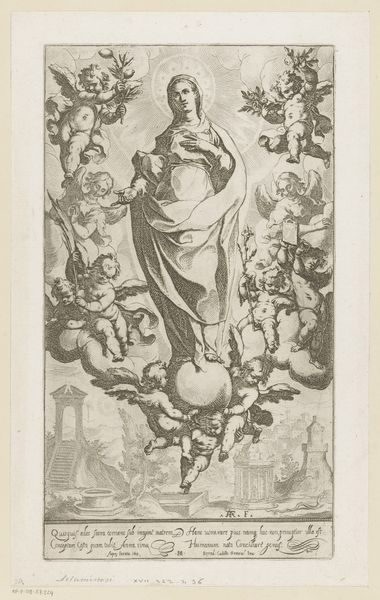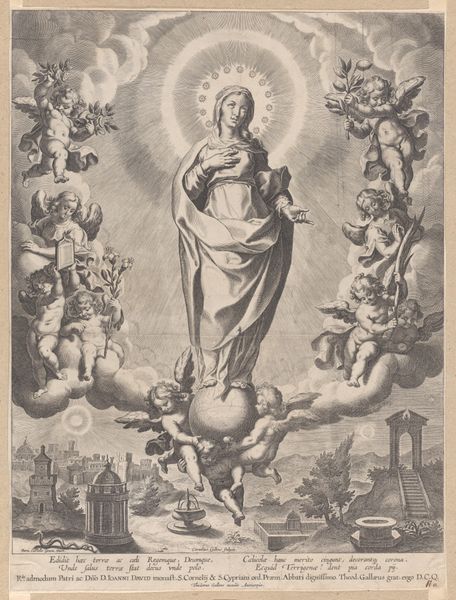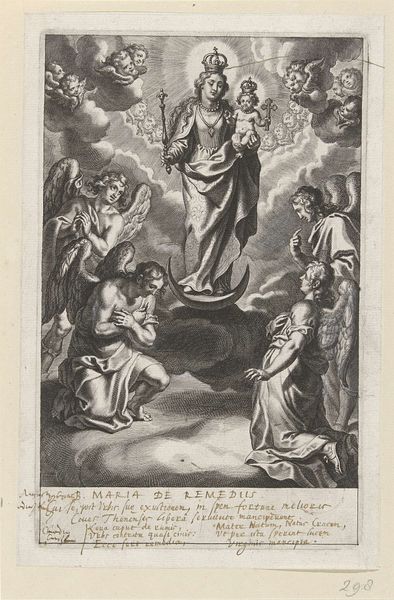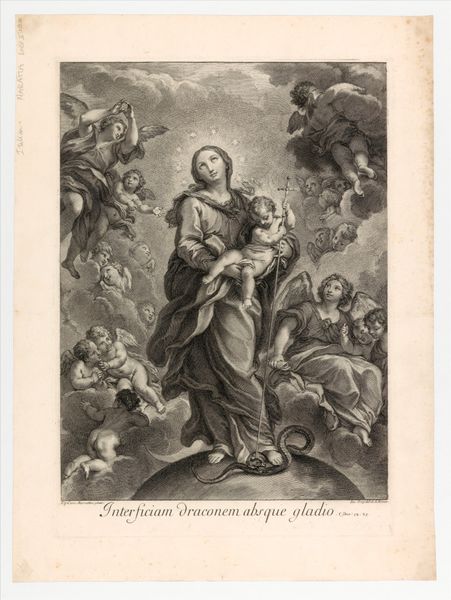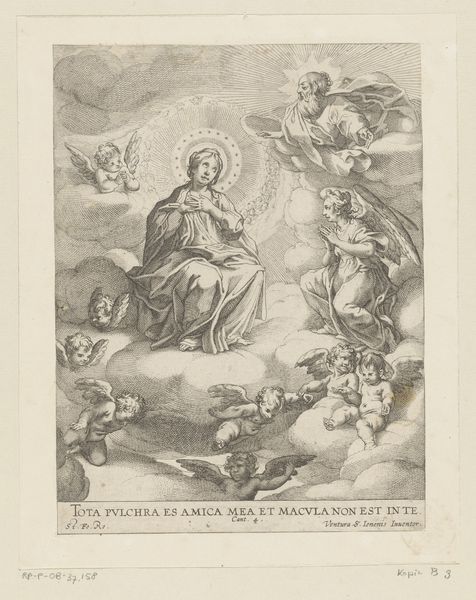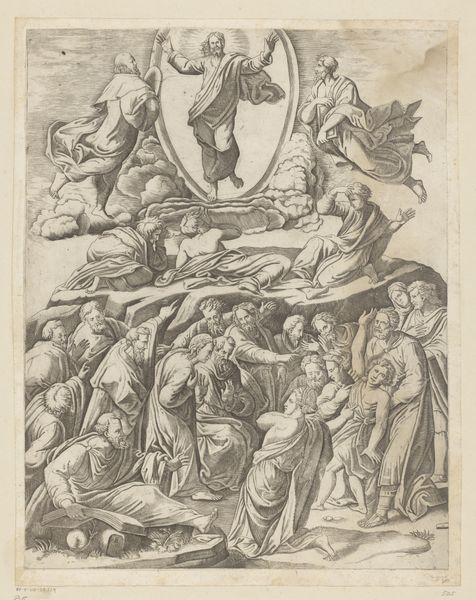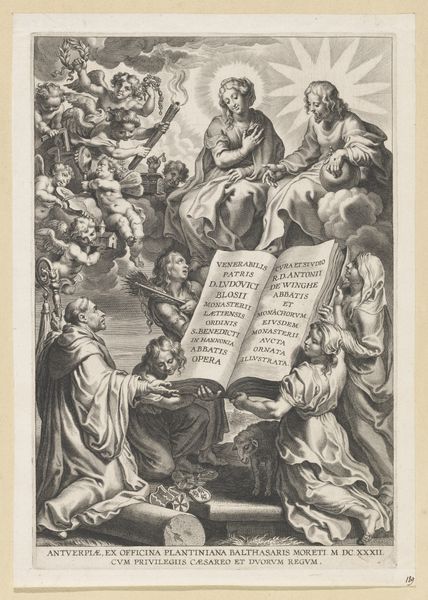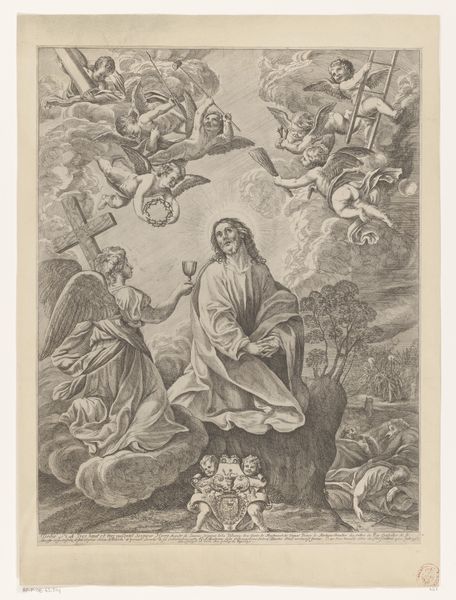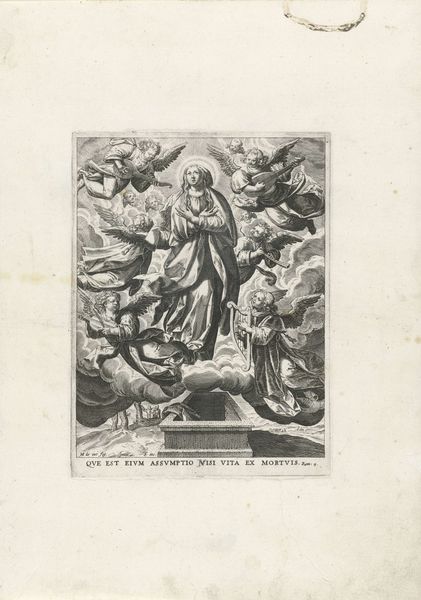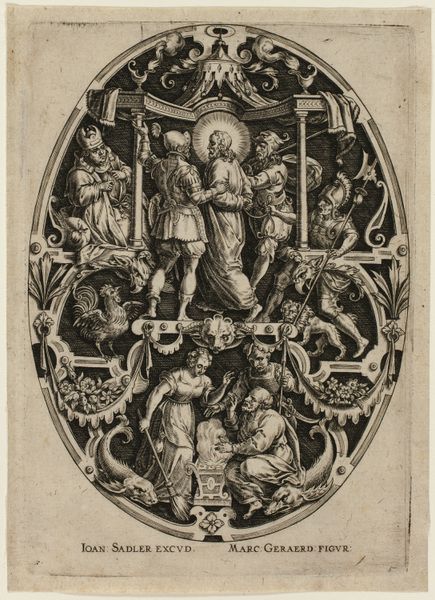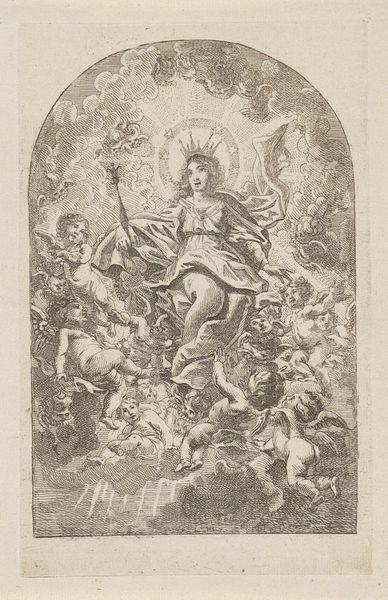
print, engraving
#
allegory
#
baroque
# print
#
old engraving style
#
traditional media
#
figuration
#
history-painting
#
engraving
Dimensions: height 335 mm, width 197 mm
Copyright: Rijks Museum: Open Domain
This engraving of Maria van de Onbevlekte Ontvangenis, or the Immaculate Conception, was made by an anonymous artist and is currently held in the Rijksmuseum. The image presents us with a visual theology of the Virgin Mary, but what social function did such images serve in their time? This print hails from the Netherlands, and the historical context is key. It's an era marked by the rise of Protestantism, which questioned many Catholic beliefs, including the role of saints and the Virgin Mary. Images like this one became powerful affirmations of Catholic doctrine, using visual codes to reinforce faith. The Immaculate Conception itself – the belief that Mary was conceived without sin – was a doctrine of great importance. Understanding this print requires delving into the religious and political battles of its time. Resources like theological treatises, local parish records, and the publications of contemporary religious debates can shed light on its meaning. By examining the social and institutional context, we can better appreciate how art engaged with and shaped the beliefs of its time.
Comments
No comments
Be the first to comment and join the conversation on the ultimate creative platform.
